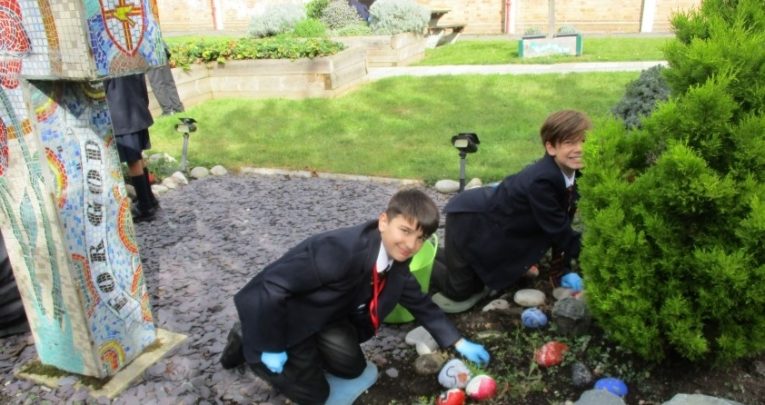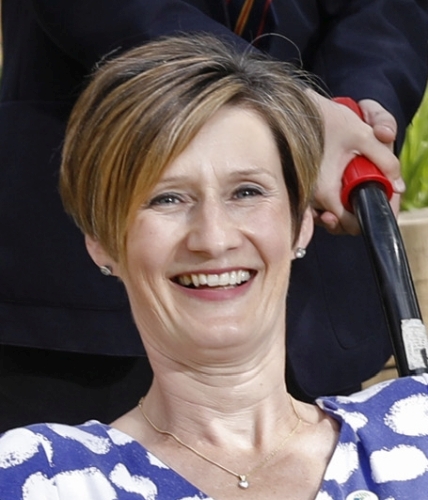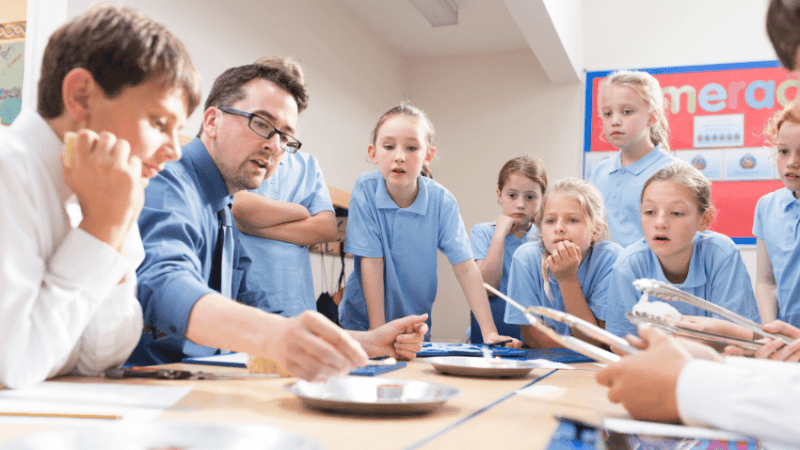Outdoor learning (and growing) – The many benefits of maintaining a school garden

Gail Hovey recalls her involvement in helping students at one London secondary take some unused land and gradually turn it into an award-winning asset for the whole school…

- by Gail Hovey

St Gregory’s Catholic Science College was originally built over 60 years ago, for half the amount of children we have currently.
Being a school in a residential part of London, it’s quite ‘landlocked’, but happened to have an unused patch of land that the governors once considered using to expand the car park. The children thought differently, however, and called for it to be turned into an eco garden.
When I first arrived at the school just over 10 years ago, a pond had been created on the land with the help of the head of science, alongside an area for growing vegetables.
As a keen gardener, I offered to become involved in developing the eco garden, and have since seen that patch of earth become completely transformed over the past decade.
A winding pathway
The pond is still there, and the vegetable patch is now one of multiple raised beds we’re using to grow produce, alongside some fruit trees that we’ve planted. We also added a remembrance garden that incorporates a rockery in the shape of a horseshoe, with a big mosaic cross at the centre.
Everything we’ve worked on in the eco garden has always involved input from our students. Some of our sixth form art students helped design the cross, and with the help of local council funding, we were able to bring in a mosaic artist to work alongside them and assemble the finished piece.
Entering the garden, the first thing you come across are fruit trees, then the growing areas, and the memorial garden just beyond that. At the very top is our outdoor learning environment – a diamond- shaped area with enough seating for a full class of children and a storage shed, on which is mounted a blackboard. The creation of the space coincided with the school’s recent diamond jubilee, so the students wanted the blackboard to reflect how children attending the school 60 years ago would have learnt.
There’s also a path leading up to the area that’s marked out into 60 sections, each one displaying brief details of a significant environmental event or development within the lifetime of the school, such the introduction of the Clean Air Act in 1956, right up to the Pope’s 2016 Encyclical on the environment.
Over the years we’ve entered a number of contests and awards schemes, coming second in the RHS’ Green Plan It design project, but winning both David Domone’s Cultivation Street school garden competition, and the RHS’ School Garden Teams of the Year competition. We’ve also formed successful partnerships with businesses and other organisations, which have helped us secure funding grants, and previously resulted in Sainsbury’s donating us a greenhouse.
Getting them hooked
I usually run a gardening club on Wednesday lunchtimes throughout the year, and also on Thursdays during summer. The garden is often a venue for science lessons, and having converted to an academy, we now have multiple primary schools linked to us, which we invite in to the garden during the summer months to experience tailored lessons on biodiversity.
We’ve also regularly taken part in the RHS’ ‘Big Soup Share’, turning the vegetables we’ve grown into soup as part of food tech lessons. One of our teachers has close links with a local soup kitchen, and will sometime organise teams of sixth formers to volunteer there.
Our student voice is mainly organised through the eco committee, which I run as part of our eco schools programme. Consisting of around a dozen Y9 students who serve for a year, the eco committee will perform an environmental review of the school’s biodiversity and outdoor spaces every autumn.
The garden club I supervise is open to all year groups – though usually made up of the school’s more enthusiastic Y7s and Y8s – and will carry out most of the eco garden’s physical maintenance.
Trending
As each new Y7 arrives at the start of the year, we’ll do lots of gardening and outdoor activities with them to get them hooked. By the time they get to Y9, there’s a better chance that those students will be keen to join the eco committee, having spent lots of time in the garden already.
It’s ultimately the school’s eco committee that comes up with the ideas that will inform our outdoor learning space from one year to the next.
Calm, yet stimulated
The children tell me that after having lessons in the eco garden, they’ll usually feel a lot calmer. They really appreciate the fresh air, so it’s good to see both the eco garden and outdoor learning environment being used across the curriculum.
The space is included within the school’s wider room booking system, and has previously hosted history lessons, Y11 maths lessons involving loci and constructions, Y10 photography sessions and art lessons. Our history department has even used it to re-enact the Battle of Hastings!
It’s also been used to support the volunteering and skills elements of the school’s Duke of Edinburgh Award activities. I’ve had older students volunteer to help support our younger students in the gardening club, as well as use the space to learn new skills – something that’s been really helpful for me, and from which they’ve gained a great deal as well.
The pandemic has prevented us from holding the eco garden club as before, since it’s not currently possible for different year groups to mix. The school’s staggered lunchtimes have meant that our sessions have run into standard lessons, but the teachers don’t seem to mind. They’re largely happy to see the students getting outdoors, and have told me that when they return to class afterwards, they’re both calmer and more stimulated from being outside.
I recently advised another local secondary comprehensive on how to use their outdoor spaces for learning purposes, and one of their key concerns was funding. There are many different funding streams out there – such as Learning Through Landscapes, for example – which are keen to promote outdoor activities and learning for children and gardening in schools.
There may have been a feeling shared among secondary teachers in the past that school gardens and outdoor learning spaces don’t add any value, but that’s not an attitude I’ve experienced here – the teachers have all embraced the space we have available.
Try it yourself
- Reach out
When creating an eco garden or outdoor learning environment, be sure to involve the whole school in the design and planning stage. Decide early on who’ll be using it and for what purpose – subject teachers for standard lessons? Teaching staff and outside specialists for extra-curricular activities? Or both?
Involve your school’s students by setting up a dedicated garden council or committee, and look at potentially involving partner schools or local Early Years settings. The clearer your plan at the start, the more chance you’ll have of successfully applying for external funding. - Start small
Establish your garden with three or four raised beds to begin with. Look into growing fruit and/ or vegetables with a quick cropping season, making note of what your children actually like to eat. Examples might include lettuces, radishes, strawberries, peas, tomatoes and first early potatoes (the latter in sacks). - Seek assistance
By joining the RHS’ Campaign for School Gardening you can gain access to a wealth of helpful information via their website, including staff training programmes, lesson resources with curriculum links and details of upcoming competitions and accreditations that can earn you gardening vouchers. Find out more at schoolgardening.rhs.org.uk/home. - Look after it
A commitment needs to be made across the school that pupils will be available to maintain the garden, guided by a member of staff or volunteer, be it during lesson times or as part of a regular gardening club. Don’t forget to decide who’s responsible for watering it over the summer holidays.
Gail Hovey is a science college project manager at St Gregory’s Catholic Science College.










